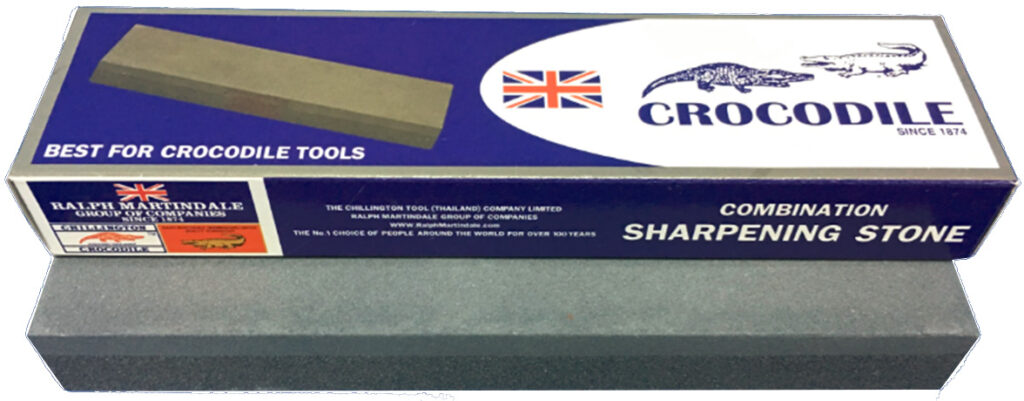Introduction: In the world of tool maintenance, having the right sharpening tools can make all the difference. Crocodile sharpening stones, are versatile and cost-effective tools that can help you keep your machetes, OPS and utility knives in peak condition.
Let’s explore how to make the most of these 8″ x 2″ x 1″ sharpening stones, made from a combination of green and black silicon carbide, with dual grits of 120/240.
What you will need:
- Crocodile Sharpening Stone
- Water for soaking the stone
- Dull knife or tool
- A cloth or towel
- Patience and attention to detail

Step 1: It’s essential to prepare your Crocodile sharpening stone before you start. Place the stone in a container or basin of water and soak it until there are no more air bubbles rising to the surface. The stone should be completely saturated. It’s important to keep the stone wet throughout the sharpening process to achieve the best results.
Step 2: Assess the blade of the knife or tool you want to sharpen. If it’s visibly dull or has nicks and imperfections, it’s time to restore its edge. Crocodile sharpening stone are excellent for this purpose.
Step 3: Start with the Coarse Grit to begin the sharpening process, use the coarse side of the Crocodile whetstone (the 120-grit side). Make sure it’s wet and then place the blade on the stone at the desired angle (usually around 20 degrees for most knives) with the cutting edge facing away from you. Apply even pressure as you move the blade across the stone.
Sharpen the blade along the full length of the cutting edge, maintaining a consistent angle and using equal strokes on both sides of the blade. This will create a smooth bevel. Repeat this process until you see a noticeable improvement in the sharpness of the blade.
Step 4: Once you are satisfied with the initial sharpening using the coarse grit, flip the Crocodile sharpening stone to the fine side (240-grit). This finer grit will further refine the edge and remove any remaining imperfections.
With the stone wet, repeat the sharpening process, again making sure to maintain the same angle. Sharpen both sides of the blade equally until you achieve the desired level of sharpness.
Step 5: Final Honing -The final step in the sharpening process involves honing the blade. This is done to remove any remaining burrs and ensure a razor-sharp edge. Use the fine grit side of the stone for this step.
Gently stroke the blade across the stone a few times, applying minimal pressure. This should help refine the edge and give it a clean finish.
Step 6: Test the Sharpness – After you have completed the sharpening process, carefully wipe the blade dry with a cloth or towel. Be cautious as the blade will now be very sharp. Test its sharpness by gently running it through a piece of paper or making a small cut on a piece of food. You should notice a significant improvement in its cutting ability.
Crocodile sharpening stones are a fantastic addition to any tool maintenance kit. With the right technique and a bit of practice, you can keep your machetes, OPS and utility knives consistently sharp and ready for any task. Remember to keep the stone wet during the process for the best results and take your time to ensure your blades are as sharp as needed. With Crocodile sharpening stone your tools will be ready to tackle any challenge that comes their way.

